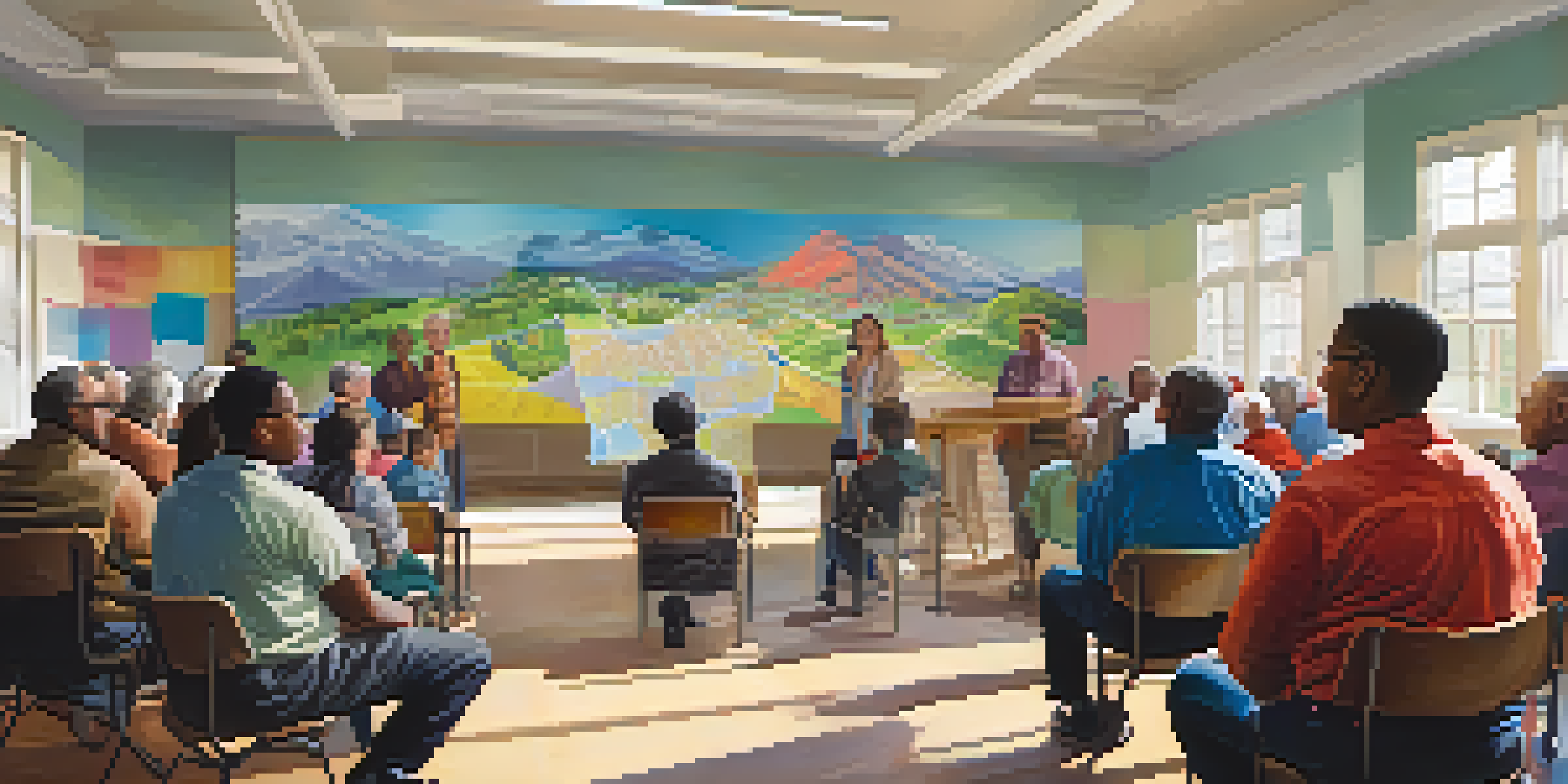Engaging Residents: A Community-Centric Disaster Recovery Model

Understanding Community-Centric Disaster Recovery
Community-centric disaster recovery focuses on involving residents in the recovery process. Instead of top-down approaches, it emphasizes local knowledge and resources, harnessing the unique strengths of each community. This model not only empowers residents but also fosters a sense of ownership and responsibility towards rebuilding efforts.
The Importance of Resident Engagement
Engaging residents during disaster recovery is crucial because they have firsthand experience of the challenges faced. Their insights can lead to more effective solutions that cater to specific local needs. By involving residents, recovery efforts become more relevant and sustainable, as people are more likely to support initiatives they helped shape.
Empowering Community Engagement
Involving residents in disaster recovery harnesses local knowledge and fosters a sense of ownership.
Building Trust Within the Community
Trust is the foundation of effective community engagement. When residents feel that their voices are heard and valued, they are more likely to participate actively. Building trust can be achieved through transparent communication, regular updates, and involving community leaders in the decision-making process.
Creating Inclusive Participation Opportunities
To ensure all voices are heard, it's essential to create inclusive participation opportunities. This might involve hosting town hall meetings at accessible locations or using digital platforms to reach a broader audience. By accommodating different schedules and preferences, communities can engage a wider range of residents.
Building Trust is Essential
Effective community engagement relies on trust, which can be built through transparent communication and involvement.
Utilizing Local Resources and Knowledge
Local resources and knowledge are invaluable assets during disaster recovery. Communities can leverage local businesses, schools, and organizations to provide support and services. By utilizing these resources, recovery efforts can be more efficient and tailored to the community's specific context.
Implementing Feedback Mechanisms
Feedback mechanisms are essential for improving recovery efforts. Regularly soliciting input from residents can uncover issues and highlight successes. This two-way communication not only helps refine strategies but also reinforces community involvement and commitment.
Leveraging Local Resources
Utilizing local businesses and organizations enhances recovery efforts by tailoring solutions to community needs.
Success Stories of Community-Centric Recovery
Numerous communities have successfully implemented resident-engaged recovery models. For example, after Hurricane Katrina, many neighborhoods in New Orleans rebuilt with strong community involvement, leading to revitalized neighborhoods that reflected the desires of their residents. These success stories illustrate the power of collaboration and local engagement.
Looking Ahead: The Future of Disaster Recovery
As climate change increases the frequency of disasters, the need for community-centric recovery models will only grow. Future recovery efforts must prioritize resident engagement to build resilience and adaptability. By fostering strong community ties and encouraging participation, we can create more sustainable and effective recovery solutions.